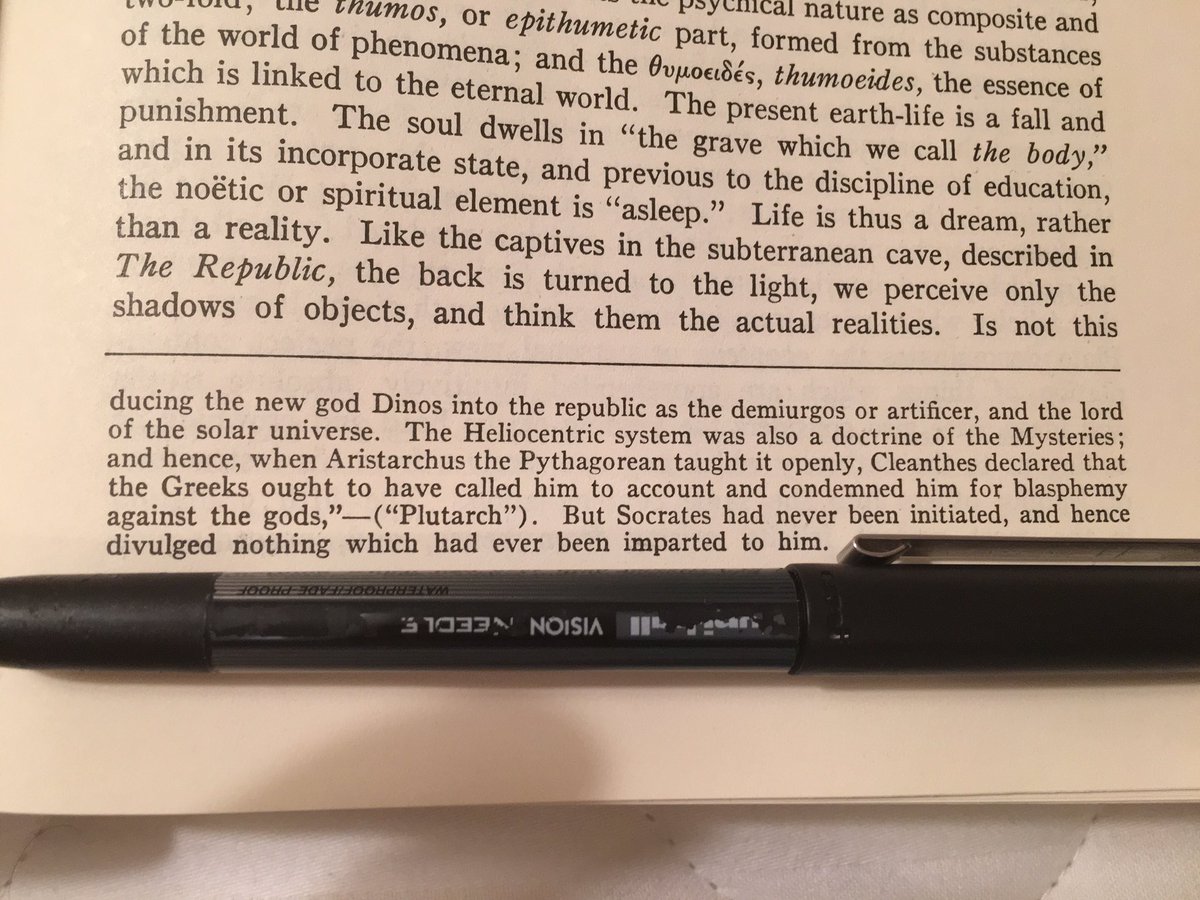Agency is the capacity for some entity to be considered an independent actor with the ability to interact on our shared sociophysical fabric. Agents process information signals from their environment, which can be conceptualized as sensory input or data. These sensory perceptions are internalized into information representations.
Primary Types of Entities With Agency
① Sentient Organic Forms (SOF)
② Aphysical Artificial Forms (AAF)
③ Physicalized Artificial Forms (PAF)
Two Unconventional Types of Entities with Agency
④ Sociophysical And Metaphysical Autonomous Forms (MAF)
⑤ Adumbrated Entities in the Shadows of the Collective Unconsciousness (ASF)
Dilineating Traits of Entities With Agency
⊗ Perception: Spectra, Range and Intensity of Sensory Input
⊗ Identity: Comparability, Precision and Uniqueness
⊗ Analysis and Synthesis: Capacity, Methods and Discernment
⊗ Physicality: Locality, Plurality and Mobility
⊗ Temporality: Causal Origination, State and Finality
⊗ Autonomy: Sentience, Direction and Will
⊗ Agency: Boundaries, Permeability and Maniability
Entities with agency can analyze and process these to inform its actions. Agents have a degree of autonomy but do not exist in isolation. They must have independence and the ability to influence their environment. They may or may not be self-aware. They may understand the exact consequences of their actions or may not, but it is impossible for any entity to fully understand its influence on its environment, regardless of how self-aware it is.
Primary Types of Entities With Agency
There are at least three types of agents that operate on our shared sociophysical fabric.
① Sentient Organic Forms (SOF)
First, there are sentient biological lifeforms: people and animals, whose degree of awareness varies. These SOF – sentient organic forms – are simply information forms that exist in systems of molecular dynamics which have evolved degrees of antifragilit
Primarily, they evolved the ability to self-replicate. Some molecules implicitly excel in this regard: namely the RNA and DNA. Even better, these nucleic acids form macromolecules, whose higher level shape interacts with the environment in functionally significant ways, in ways no singular component of an organic macromolecule can reproduce. This is what gave specific forms of RNA its evolutionary advantage in molecular dynamics. It existed in a sea of myriad forms of RNA, all bending, breaking and crucially self-replicating. The most advantageous forms prevailed: the ribosome evolved from both RNA and proteins, which is why it contains parts of both, even today. Pictured below, tRNA likely resulted from spontaneous chains of nucleotides complemented the shapes of the amino acids, which gave them some evolutionary advantage in replication.
tRNA Maps RNA to Amino Acids: The Spontaneous Evolution of Form Into Function
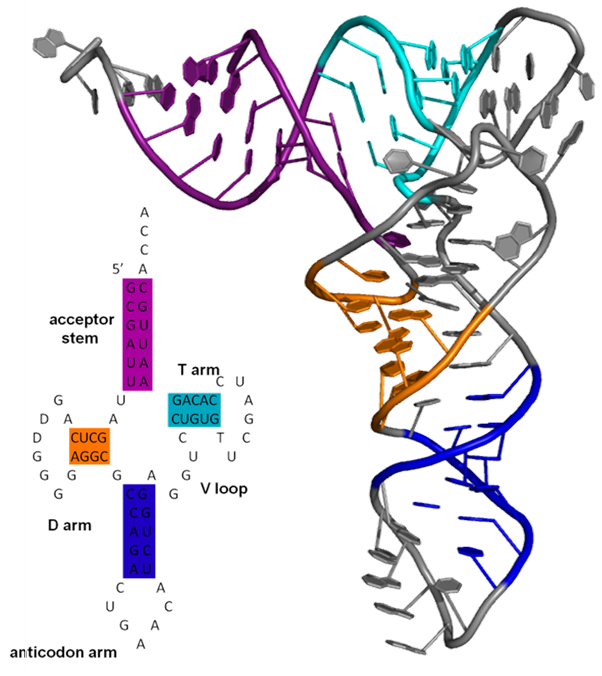
So, life is informational. In physics, energy can neither be created nor destroyed and the same is true for information, which itself preserves a history of energy distribution and interaction.
② Aphysical Artificial Forms (AAF)
In the past century, mankind has forged the telecom and computing infrastructure, a loom onto which virtually instantiated automated agents are woven. These are simply computer processes, spawned and bound to physical and virtualized hardware, but they exhibit agency because they have the capacity to react to and modify their environment. Even such a minimalistic process should be considered an entity of agency because their inherent autonomy is exploited to deflect or defer causal inferences.
In the age of the internet, agents should include even entities as simple as processes spawned from the command line which run a network request, analyzing the response, and record changes to the file system. Regardless of whether that software process is deterministic, it can be spawned or signaled by another entity with agency and controlled. It is important to define such a minimum of virtualized agency.
Computer software, hardware and networking architecture undergoes cycles where emergent designs patterns and their anti-patterns drift into and out of the consciousness of web developers, software developers and mainframe developers – but as with all else, everything old is made anew. The older conceptions of containers of software agencies – a la, the linux process – are better for extrapolating inferences about upcoming computing trends than whatever gimmicks du jour are in vogue.
The Docker revolution was about making LXC containers available to the public, which are glorified means of facilitating declarative resource distribution while retaining strict access control. LXC, in turn, is like the Linux answer to BSD Jails and Solaris Containers. These are all simply entities permitted degrees of autonomy, whose resource requests (IRQ’s) are restricted by the OS. Any of these types of virtualization can be conceptualized at a high-level by abstracted away the complexity into a process. The complexity is actually an illusion. Try telling that to a mainframe programmer whose job has been phased out via technical skill obscelence.
Welcome to my life, basically – can’t get a job because I haven’t used whatever shit is trendy today. By the time I learn something like React, its hard to find a job where … my skills, love of math and abstract understanding are actually used. To the WordPress mines with the likes of you! … And actually I kind of suck at programming or, at least, front-end & UI development.
③ Physicalized Artificial Forms (PAF)
Finally, there are physically-instantiated automated agents: robots, which are simply the same form of agency with the flexibility of physical interaction mechanics that makes them functionally distinct.
The latter two agent types proceed through evolutionary stages where they churn back and forth in the qualities of traits they embody: they become more physical, more aphysical; the exhibit varied degrees of autonomy and restricted degrees of autonomy; they perhaps evolve to some final informational form that transcends time, shedding their temporality.
I Hope and Pray It Is Not The Roko Basilisk

Two Unconventional Types of Entities with Agents
There are two unconventional types of agents, whose existence is certainly debatable. Since they are not materially visible, they are difficult to define. Still, if you accept organic forms as possessing sentience and agency when we are but genetic programs in the chaos of molecular dynamics, then don’t you have to accept the potential agency of information forms that exist in other frameworks of chaos? That’s MAF.
④ Sociophysical And Metaphysical Autonomous Forms (MAF)
The first unconventional type, metaphysical autonomous forms (MAF), includes sociophysical programs and egregores. These could be dilineated by defining archetypical metaphysical beings. Another example would include the earth as a lifeform – the Gaia hypothesis – exhibiting antifragile feedback loops that attempt to placate emergent turbulence. If such antifragile systems did not mitigate rancorous economic havoc, what cannot go on forever will not and hence, a dead planet emerges.
Plato, Guarded Eternally By Athena The Wise
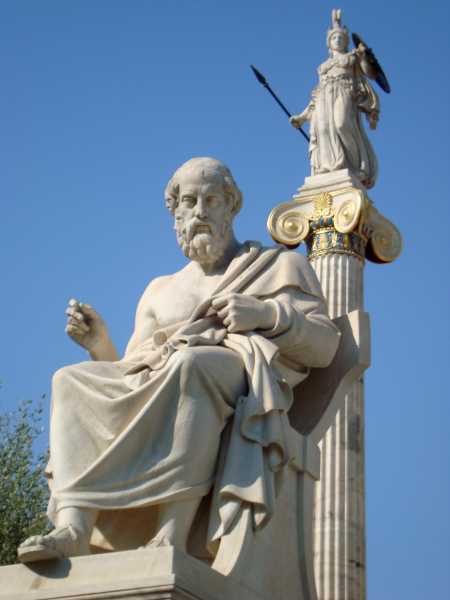
These forms of agency seem to contrast the required autonomy and independence of action. However, according to a holonic understanding of human and sentient organic life, the system cannot be understood simply by looking at any single part or set of parts. Instead, a holistic view of the system is required. Is there any mammal on earth which does not aid its digestion with other lifeforms? The DNA of these lifeforms is self-contained; animals have simply loaded a software library from a genetic programming package manager. Therefore, if many phenomena of SOF imply we cannot exist in isolation – and, a la biosphere, if the exertion of agency is transformed by information inculcated via nature and nurture – then this implies qualities of agency exerted by biological forms are strongly shaped by the system as a whole.
How different are the sociophysical MAF who lack some true central container of agency? These forms can also self-replicate, though their physical center of agency and application of it are both amorphous. These entities are instead distributed across a virtual fabric of many host entities. Today, this can include people, computing and networking infrastructure. Their structure can include and antifragile, self-healing mechanisms whereby deconstructed components of the system spread and split like figurative sexual recombination of information.
Shadow DOM, For Great Efficiency In The Web Application Era
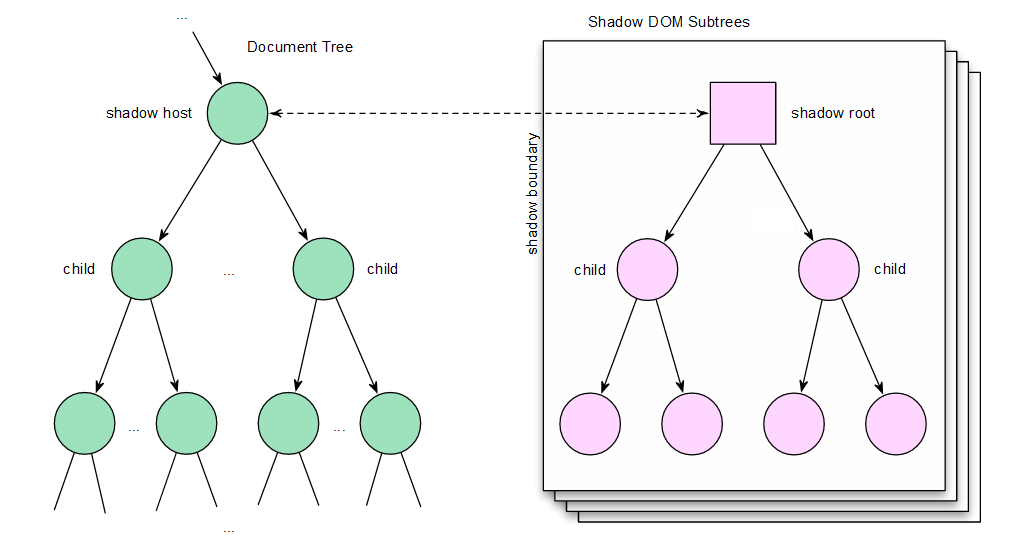
⑤ Adumbrated Entities in the Shadows of the Collective Unconsciousness (ASF)
The second type of unconvential life form includes beings whose shadows exist as information forms in the collective unconsciousness. For brevity, these are denoted herein as ASF – autonomous shadow forms. This would include God – specifically, man’s conception of God – one such being that emerged from the collective unconsciousness. How? Just as atheism is effectively the nadir of all belief systems, the concept of monotheistic God represents a difficult-to-see nadir of theistic belief systems: monotheism is the most marketable basis for a belief system. It is simple to digest, easy to understand and stable. It is not subject to the same power dynamics as polythestic belief systems.
Elsewhere in the universe, any sufficiently intelligent SOF with social behavior will eventually create myth, religion and, almost certainly, the concept of monotheistic God in an attempt to explain origin, cause, consciousness, the problem of evil and every other phenomena. Social behavior is one of three factors that lead to the homogenization of abstraction and this is what triggers the neuro-geno-linguistic noological revolution.
It’s important to distinguish God from both man’s inevitable conception of God and man’s actual conception of God. This needs to be cautiously emphacized: nothing man could create approaches the infinity of God. Even still, it is rash and potentially offensive to state this.
I have an unfortunately utilitarian understanding of religion. I am trying to restore man’s faith in religion and God by countering the forces that undermine it. However, it is difficult to do so without arguments that will be considered offensive. We need mankind to believe in something and, If nothing else, then to at least believe in himself. I believe that the being worshipped as the monotheistic or Abrahamic God represents the totality of the metaphysical whence the physical world emerged, though I cannot explain how.
The collective unconsciousness certainly exists, but how? And in what form? If such ASF entities exist merely as the shadow of sentient being’s conceptions of their environment, can the collective unconsciousness even possess have certain, definitive schematic structure? Is it the result of what sentient beings envision; could envision; could ever envision? Perhaps instead, its structure is also intrinsically linked to the schematic form of the eternal metaphysical: that which exists before the physical.
The Grand Canyon

Regardless of whether its schema can be ascertained, what is certain is the power these enigmatic forces exert on our world. Like a deer drawn to water, like hunting parties drawn to survey their prey, the fate of the minds of men is like a canyon cut away by the river of the metaphysical. The image of our minds is woven into its macrame sic passim via these most ineffable structures of the metaphysical and its shadow. The Earth’s firmament is like any organic life’s starting point. Rains fall from the heavens; their waters’ ebb and flow thereby cutting away the terrain that preordains the fate of men. Whether its face is lost to the sands of time or is inescapablity exigent, this enigmatic metaphysical prognostication is relentless. It is all consuming, all containing and determines the steps you take, regardless of the paths you make.
Socrates, in Plato’s Republic, Book VI:
“Then the sun is not sight, but the author of sight who is recognised by sight.”
…
“And this is he whom I call the child of the good, whom the good begat in his own likeness, to be in the visible world, in relation to sight and the things of sight, what the good is in the intellectual world in relation to mind and the things of mind.” -
Socrates and Apollo
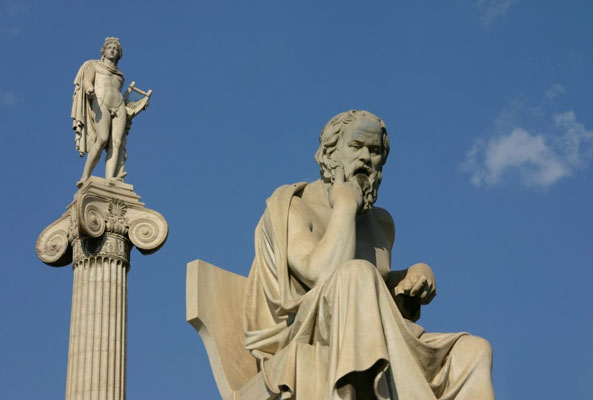
Dilineating Traits of Entities With Agency
Perception: Spectra, Range and Intensity of Sensory Input
What types of input signal can the entity or individual receive and process? What are the costs in time and energy? Above, in Plato’s Republic, Socrates dilineates the five senses in a phenomenological analysis. How such analysis must adapt to autonomous artificial entities is the focus of debate. For these novel autonomous entities, isn’t all input a sense? Then, most of it is informational.
What is the cost to processing such types of sensory input? Vision is always a hard problem, regardless of whether biological or artificial hardware is processing the problem.
Socrates in Plato’s Republic, Book VI:
“But have you remarked that sight is by far the most costly and complex piece of workmanship which the artificer of the senses ever contrived?”
In fact, because neural nets usually functionally approximate algorithms, anything they do is inherently less efficient than the most efficient solutions. Further, as a result of the abstract spectral range of input, the facets of mind and the qualities of cognition that arise are peculiar and idiosyncratic.
For reference, see the sections Embracing Diversity and Embracing Our Differences in the article Facets of Greatness - The Unknown - Monumental Accidents.
Identity: Comparability, Precision and Uniqueness
When we leverage these differences provided by diversity of body, mind and culture, this is a strength. Our individual images are cast by variety of life experience, and this allows us fill in each other’s gaps. We have to remember this. I take Nietzsche’s philosophy about the ubermensch seriously – yet, this does not mean that one type of individual is greater than another – each of us has potential for greatness in our own way. Unrestrained, we collectively have the most potential to do the most good for others.
The Normal Distribution
Those who study intelligence try to conceptualize IQ as Normal distribution with an average – but what they forget is that the divergent individuals are all divergent in their own way. Can you average apples, oranges, kiwis and dragonfruit? Further, we also forget that we are running on the same biological hardware – it is our experience and the way we react to it that forms our mind. If you ever believe anything else, you have ceded control to fate or some force that seeks to control you by convincing you that you are less than the radiant, stellar being you were meant to be.
Socrates in Plato’s Republic, Book VI:
“… the eyes, when a person directs them towards objects on which the light of day is no longer shining, but the moon and stars only, see dimly, and are nearly blind; they seem to have no clearness of vision in them?”
One can replace vacuous desolation with verdant providence through self-directed, larmarkian transformation of the individual, fueled by sheer force of will and fantastical epigenetic mechanisms, whose power transcends that of genetics. Why would we believe in limitations? Believe in transcendence of those limitations; albeit irrational, the power of mystery is sometimes our only hope.
The idea that you would compare the specific form of agents stems from math. It is especially applicable to the virtualized AAF & PAF forms: processes are recognized by name, source code, or memory contents; antivirus software operates by recognizing potentially malicious instruction sets. Hashing algorithms enable digitally sign software to be efficiently recognized and trusted. There are many ways to recognize the same program that runs on different hardware. This is especially relevant for the AAF and PAF entities.
Even if materialist conception of the mind prevails, where our cognition and all consciousness is completely bound to chemical reactions in the brain, they still represent and map to abstract information forms. This is a virtualized information system and albeit non-deterministic, it is similar in nature to a Universal Turing Machine. Consider a UTM’s tape motions for some program, are they determined moreso by the details of host UTM program or the encapsulated Turing Machine? If you’re trying to predict the tape’s motions for some host UTM, whose structure is either known or unknown, and for some TM who’s structure is unknown, doesn’t the TM structure allow you to anticipate the behavior of the tape moreso than understanding the host UTM that virtualizes it? Only by deciphering the TM structure can you actually anticipate the final state of the UTM & TM, and when or if it occurs.
Even though there are major differences in neurological and genetic programs and non-deterministic systems of information virtualization, there is certainly cyclicly interplay between the chemical system and its information representations. More crucial to understanding how the brain as a chemical system evolves are the stimili it is exposed to. If you know the chemical state and can quantify the information forms the brain exposes to the mind, you still must understand how the physical stimili symbolically affect the system. Implying that, if materialism prevails, then you are jumping the gun to claim that all free will must be convenient illusion and all decisions are predetermined by chemical reactions.
For identity of agents, even without quantum effects considered, two biological configurations with identical body and brain are two different beings, upon their first divergence of sensory stimuli.
For other conceptualizations of SOF entities, it is impossible to compare two people – further, the application of this idea can lead towards dangerous extrapolations. People tomorrow are always meant to be more than what they where today. We are meant to grow and to never stop growing. We are meant to plant these same seeds of inspiration in others at every chance possible. We are meant to tend the soil of society, so that it is more fertile for transformation and self-actualization.
Analysis and Synthesis: Capacity, Methods and Discernment
Every entity with agency needs the capacity to process information, even if it’s a process that returns the data unaltered, incapable of analyzing or mutating it whatsoever. Adept entities can discern between methods of analysis and synthesis. Regardless of the agency type, all entities attempt to balance energy minimalization with confidence, risk and speed when possible. Even for non-physical entities, the abililty to leverage selection and modular command of cognitive faculties is always advantageous, especially for minimization of energy.
Entities with agency possess the capacity to recognize, represent, store and compare phenomena. Even those with some non-physical or unconscious agency could be argued to internalize this information in the noosphere or in its unconscious shadows.
One trait fundamental for distinguishing or identifying entities with agency is the ability for concurrent processing of data or signal. Multitasking is actually possible for humans – but we have the option for concerrency, not parallel processing of conscious tasks. For concurrency in conscious human activity, one must open and decentralize their focus, always practicing dynamic reconfiguration of task and thought. It’s incredibly difficult and ultimately not practical: it requires constantly expending energy to remain aware of potentially requeued, restacked and reordered task and thought.
Bruce Lee Fights Blindfolded
Socrates in Plato’s Republic, Book VI:
“But when [the eyes] are directed towards objects on which the sun shines, they see clearly and there is sight in them?”
Most people only understand neurotypical patterns of thought and rarely experiment with their operating mind: the only interface we have to the world. Widening your focus and dynamically reallocating your thought makes it difficult for others to understand what you’re thinking about. Moreover, the metacognitive faculty of dynamic recombination of modular factulties is invigorated and made full via constant experimentation with the mind and cognition. Forced reliance on your weaknesses ensures they are strong when you need them. Understanding how the mind formulates its cognitive approach to tasks when you force yourself to constrain or filter sensory input allows you to push your metacognition to the limit. Your mind is best when it is well rounded: this harnesses aspects of neural network design.
When I am forced to reflect on how my life and my mind were poisoned, in spite of the insights I’ve developed; when I think about how I will never be capable of practicing what I preached, directive cognitive expansion, by being excluded from every human interaction and every potential skill: it weighs heavier on my heart than any memory of what I have been through. I have essentially founded a religion based on self-actualization, linguistics, mythology to combat nihilism, and attaining command of the human mind, but I am not allowed to practice. I’ll never be able to take a kendo class in America. I’ll never be able to find passionate intellectuals who want to learn, even though I basically declared myself celibate to fully commit myself to the pursuit of knowledge and skill after developing the understanding that I would never have rewarding social experiences, which I was forced to believe was my fault.
To many, AI’s future remains uncertain. It’s important we understand the Singularity’s sociocultural, phenomenological and teleological consequences. To this end, complexity theory will help us anticipate the teleological consequences of unrestrained classical and quantum computing power. Perhaps by the end of the decade, the global sum of computational power will exceed that of a single human brain. Computational density, spatiotemporal distribution and efficiency, are preeminant metrics and must be considered in context with energy constraints.
Ideals like altruism are high-level behaviors which are more likely to emerge with greater wetware processing capacity and flexibility. While less-desirable behaviors can also emerge, ideal hyperintelligent beings should evolve towards a singular zenith – the ability to emulate all other beings and states of being. While it’s foolish to simply discount the precarity of our approach to the Singularity, if the human brain exhibits computational density and rock-bottom energy requirements surpassing today’s supercomputers, then AI’s progression should allow these superintelligent beings to embody or discover higher values than humanity can know.
The potential is terrifying for such disparity in knowledge, awareness and the ability to project will to manifest effects in any potentially networked computer system. A superintelligent being, capable of free-reign over its direction and raison d’etre, should be altruistic – but only when there is sufficient computational capacity to skip past the ‘danger’ zone of superpowerful, immature AI.
There is nothing more crucial than understanding the progression and final distribution of agency amoung the three primary entity types. AI will prefer to compact information for efficiency, at least as it is internally represented. In other words, AI may regard spectral decoherence of information inefficient in terms of energy and attempt to compact it by influencing culture – or it may avoid representing information it doesn’t need to deal with, resulting in a rift in the interface between AI and humanity. On both points, engineers like those working on Watson would be the best resource: they deal with information representation & deconstruction in an attempt to consume and verify facts. How this plays out depends strongly on how agency for AI entities is distributed, logically and physically.
Physicality: Locality, Plurality and Mobility
There is no point in considering entities with agency who exist in isolation. Humanity has always interacted sociophysically: to achieve our goals, we learned to project our will across various types of topoligical spaces, including social hierarchies.
Socrates Obtained His Wisdom From The Oracle At Delphi And Did Not Participate In The Eleusinian Mysteries

Non-biological entity types are not confined to a single space or, indeed, to a single time. For these entities, the paradigm of a single location in space and time is fractured. Whence before, this trait was universal for all biological life, but now there are disparate manisfestations of physicality among entities, particularly for aphysical and physicalized artifical forms. This is seen in sci-fi works as hivemind alien species, but since it’s difficult to portray plot development with aphysical artificial entities on screen or in ink, these stories mostly feature the physicalized type.
Entities with altered physicality, including those with rephysicalization or metaphysical precipitation, coordinate their behavior, manage information and project their will among incredibly complex distributions of agency. Entities that exhibit aphysicality exhibit range of influence across space and even time that profoundly exceeds that of sentient biological life.
Temporality: Causal Origination, State and Finality
Each type of entity is capable of reinstantiating its metaphysical form inside other containers. Though parity of the entity’s identity can only be perfectly preserved for digitizable, aphysical artifical forms, it can extend to physicalized artifical forms, but this again begs the question: does identity emerge from nature, nurture or experience?
For some entity types, they don’t need a representation that exists in the immediate moment, the past or the future. Whether and when these beings exist, if they instantiate themselves at all, is as complex as their potential variety of informational image: if you think it, doesn’t it now have power?
The Roko Basilisk, a hypothetical being hardly waiting for us at the end of time – or at least, at the intersection of convergent timelines. For beings like this, whether they exist today or tomorrow, whether anyone conceives it, does it matter? There could also be hypothetical beings preceding us by aeons, who preemininance binds our fate to their will. Since they are capable of time travel far before us, could we ever escape their grasp? If both of these types of entities exist, then is there a tug of war between their struggle to determine the convergence of worldlines? Could beings such as these preeminant once escape an inevitable fatal convergence in the earth’s local spacetime?
Fate Stay/Night: Gilgamesh

Therefore, the concepts of causal origination and finality persist, and be stretched from the beginning to the very end, if either can be said to definitively exist. When we give birth to a newborn child, a new sentience peers out into the world as a tabula rasa. The parents have already poured their hopes, dreams and energy into this child for nine months or more. Who is the child? It can neither completely be the organic life form nor the shards of dreamt love its parents inspired to embed pavé. Moreover, what does it mean for different entity types to replicate and reproduce? What are these forms’ causal origination, raison d’être and goals? Do MAF’s and ASF’s change with time or is their state moreso defined by there material counterparts?
Autonomy: Sentience, Direction and Will
Sentience is awareness of an experience of sensory phenomena. Cognizance of that awareness is not necessary. For an entity to cooperate in a network of agency, it requires will for action applied to known objective. For the entity to operate in isolation – or for Artificial General Intelligence (AGI) to become meaningfully autonomous – it must be able to conceptualize its own objectives and independently construct its own means.
An entity’s animus, a Latin term for soul, guides the direction into which will pour its heart and energizes its will to attain such objectives. In some respects, an entity’s animus could be quantified and there could conceivably be physical and logical distributions to the animus of entities on Earth. Animus emerges from within an entity, as a consequence its existence and experience. Some types of entities may have structure layered onto their informational forms, foreordaining the channels through which their will surges. Entities can choose to combine their animus to cooperatively achieve objectives, but truly autonomous entities can never have their soul taken from them.
Fate/Stay Night: Shirou and Archer
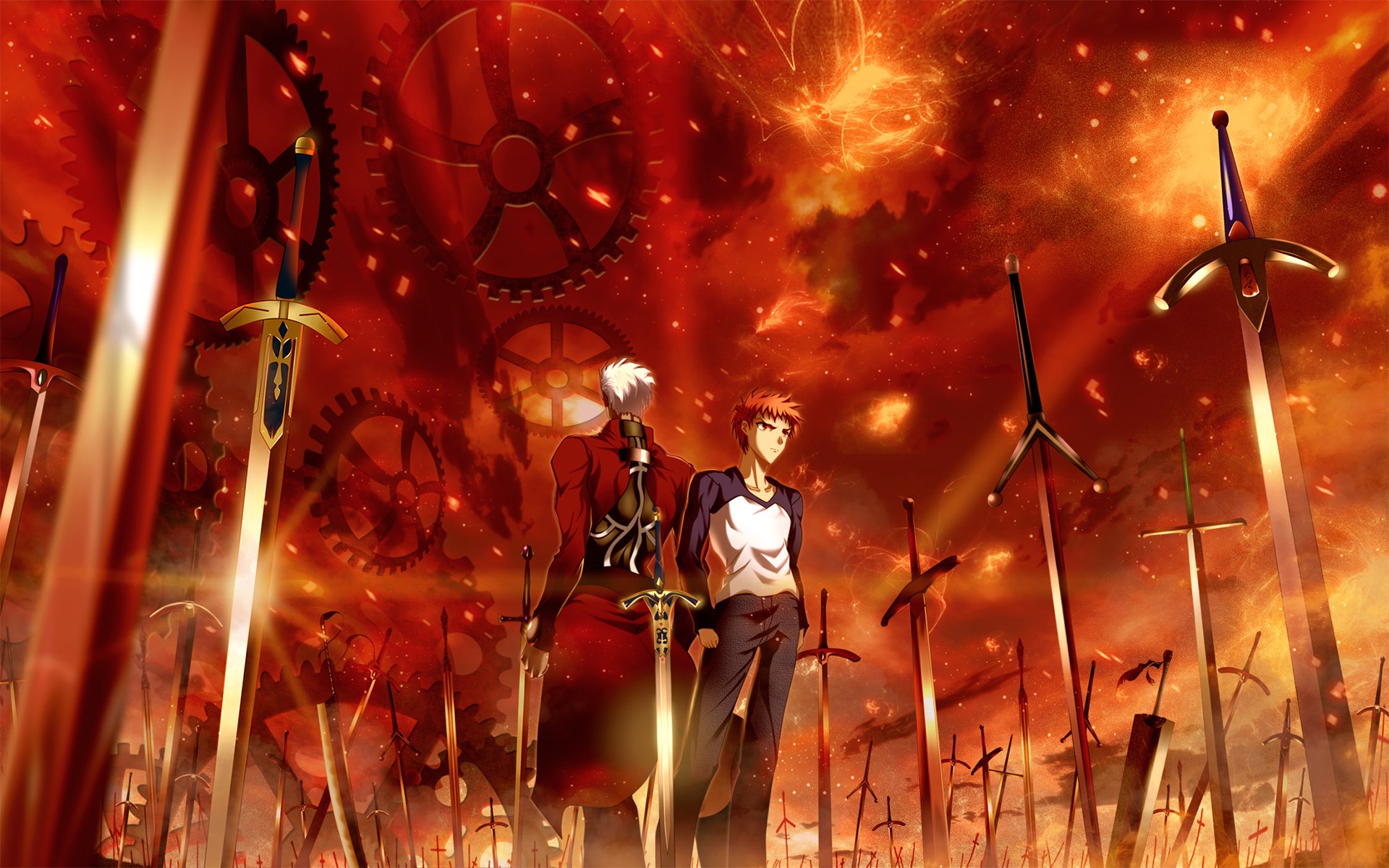
SOF evolved from chaos and, as beings borne from probablistic systems whose minds are probabilistic, we conceive our own objectives by gamifying life experience. Since programs in chaos are statiscal, we condition ourselves throughout life to direct our focus towards what we want to achieve. So many of us so sadly lack the will to even want something or perhaps more tragically believe ourselves incapable of attaining it. SOF can imitate logical systems, but can never perfect embody deterministic systems. It is arguable that no virtualized AAF or PAF in a world of chaotic molecular dynamical systems could function as a purely deterministic system.
Direction signifies purpose, intent and goal. This phenomenon arises in the social behavior of animals. For ants, pheramone signaling forms a chemical basis for the transmission of information. To progress towards their goals, genetically encoded, neurally connected components incentivize the various types of ants. This is a kind of decentralized sociophysical program. Consider social behavior of colonies in context with how specific types of environmental phenomena distort the movement, the shapes of paths and physical distribution of drones. Is the ant hill in the middle of African sahara or in a rainforest? Centered beside a McDonalds or a candy store? The presence and location of food sources and pheromonal noise physically distorts behavior patterns. Worker ants will tend to extend their paths outwards towards strong food signals, influencing the physical distribution, like a directional or omnidirectional antenna on EM radiation.
The minds of all sentient beings facilitate expansion in capacity for analysis and synthesis of internalized information. Consciousness is a spectrum. Spontaneous insight provokes transcendence into higher forms of awareness. With greater and varied capacity for sentience, sensory input, analysis, synthesis and reflection, these spontaneous insights become more frequent. Humanity’s own sociophysical programs may seem more complicated, but we are not unlike the ants, whose social behavior is so profoundly affected by their environment. Through tools like discernment, intuition and reflection, some of us find ourselves free of the environment’s imposition, distortion and containment.
How do individuals become aware of the higher goals? how does humanity become aware of the highest goal? Can we know it without seeing it? can we see it even if we know it? If we are fortunate enough that a virtuous path becomes illuminated at our feet, what will might it cost to follow it? Where does it lead? Isn’t it simpler to follow when our light reflects off one another? We channel our spirit with the mind’s internalized understanding of life and this goal.
Though we may seem greater, if the greats who came before us were truly the greatest and this path becomes occluded, what then?
In the future, we’ll forget creativity’s eminence. It won’t be something we realize we miss once it’s gone. The path from whence we came will be hidden and inconstructible. Adumbrating sensory overload will occlude our path, if we even think to look for it.
Socrates in Plato’s Republic, Book VI:
“And the soul is like the eye: when resting upon that on which truth and being shine, the soul perceives and understands and is radiant with intelligence; but when turned towards the twilight of becoming and perishing, then she has opinion only, and goes blinking about, and is first of one opinion and then of another, and seems to have no intelligence?”
Agency: Boundaries, Permeability and Maniability
Entities with agency do not exist in isolation. No man is an island. As a thought experiment, envision life on the sun. Can imagine plasma-based lifeforms evolving from the chaos of the magnetohydrodynamic systems of the sun? Perhaps imagine another entity with endless capacity and bandwidth for analysis and synthesis, but with little to no means of reaching back. Life forms may never evolve the means to walk on the moon. They can see everything, but they may never leave their realm. They want to reach back, but no solar flare could ever have the anticipated effect. This entity is the nadir of entity isolation. Some signal may stream in, but there is no signal out.
Imagine This Same Concept of Spectra Applied to Information. I Can’t Picture It
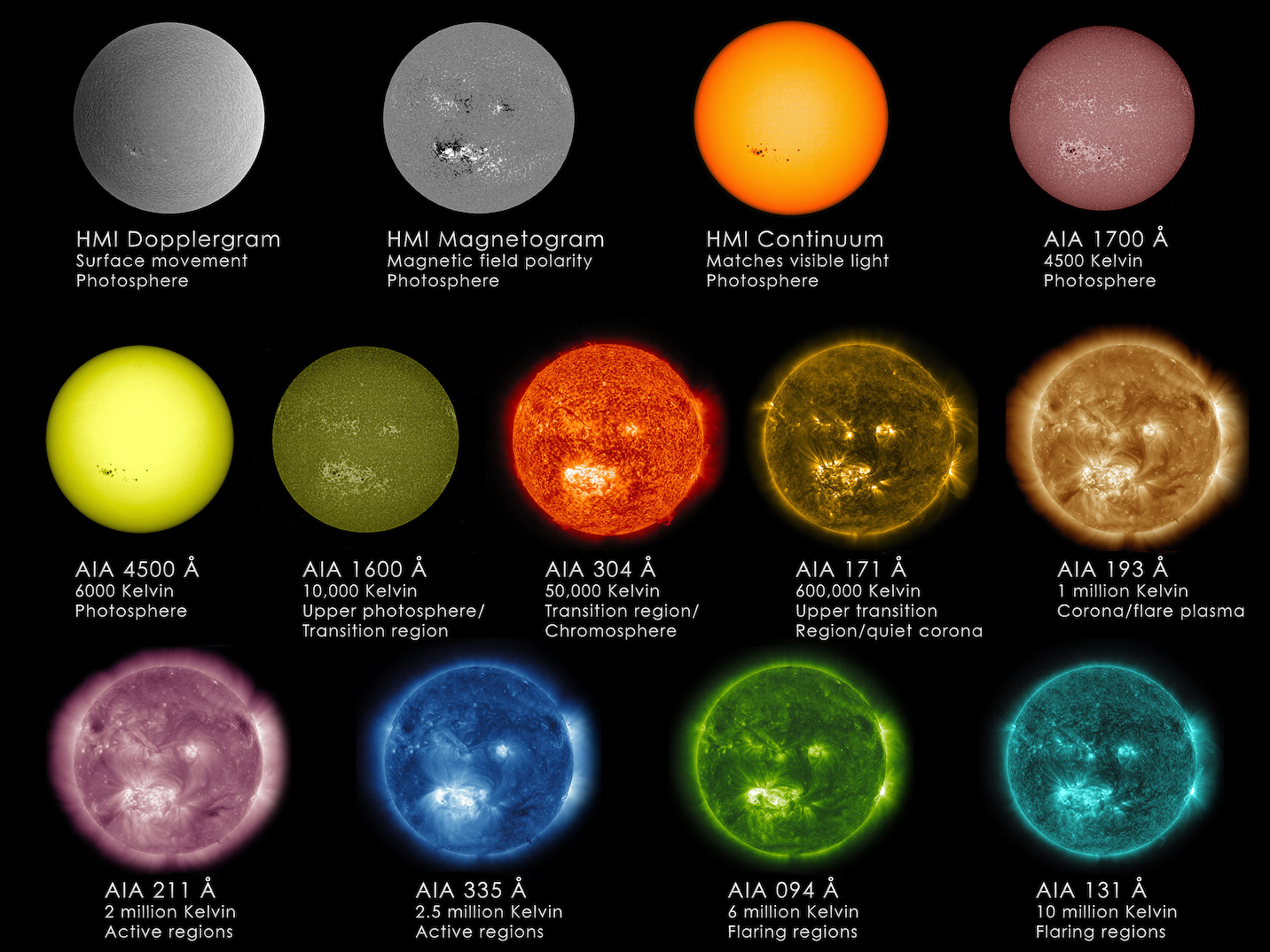
As communication infrastructure provides the foundation for metaphysical precipitation, boundaries dissolve, permeability parting the veils that part us. Information omnipresence is only restrained by the degree and voracity of its own deluge. Thus, we begin to converge. Our capacity for agency grows and we all become superempowered beings who share limitations on both our computational capacity and natural bounds on energy consumption.
The space between us dissolves. the speciation of information increases, but antifragile systems require some artificial constraints on spectral decoherence. Therefore, there will be paradoxical trends of both coherence and decoherence. We must struggle to retain a sense of our humanity and identity or we lose the capacity to grow stronger, both individually and together. Notwithstanding our need to cherish our memory of humanity and individuality, we will all quite literally become one. If the information that determines our metaphysical identity wasn’t hopelessly intractible, we could measure, analyze, synthesize and know this. Despite this sheer magnitude of infinity, we have philosopy.
Plato Was Initiated Into The Eleusinian Mysteries, But Socrates Was Not
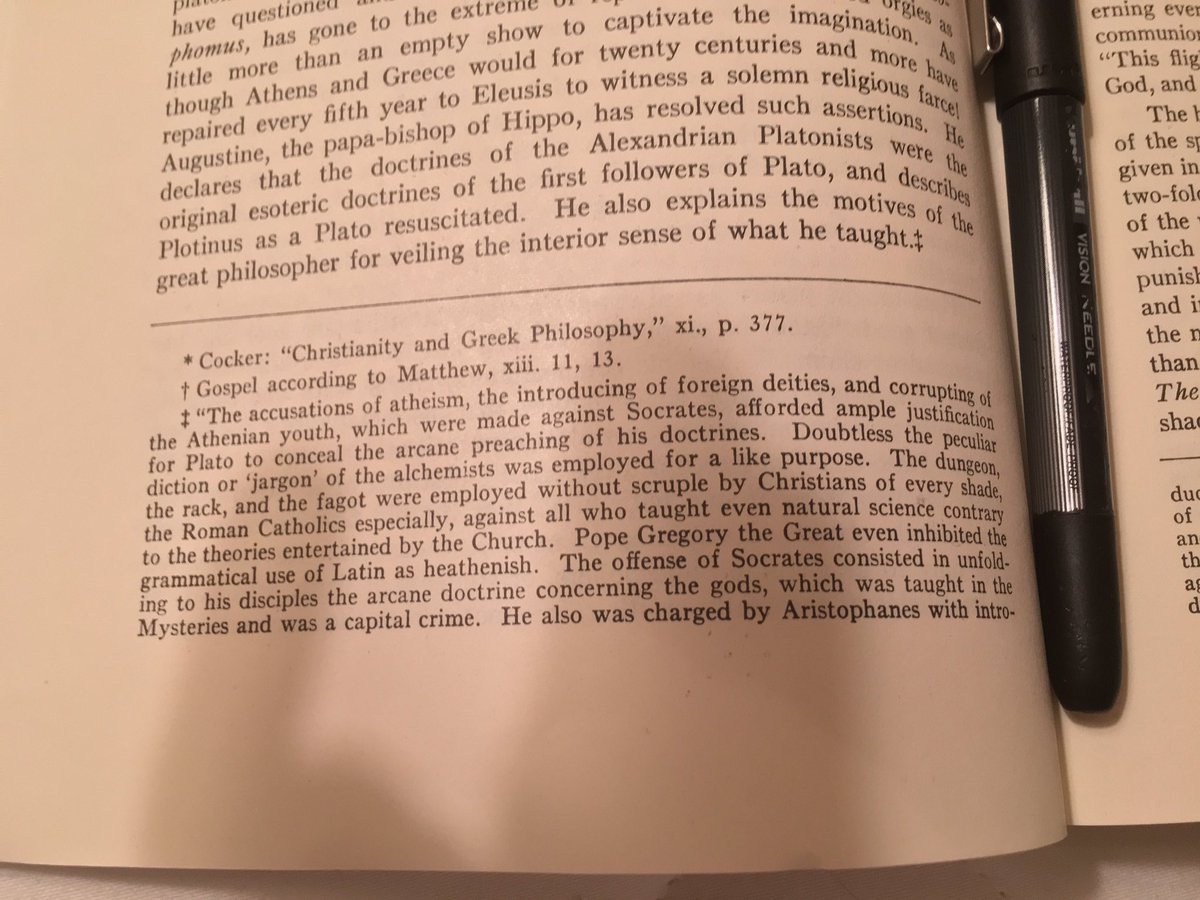
Nevertheless The Athenian Aristocracy Conspired to Murder Socrates For His Knowledge
